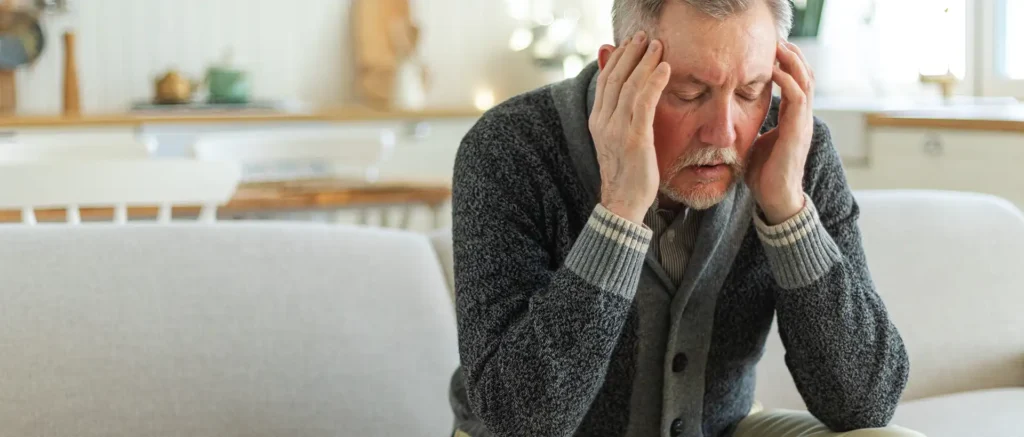How to Stop Drinking at Home: Safe Alcohol Detox
Change often begins in the spaces we live in, and for many of us, that means asking what it takes to quit alcohol without leaving home. Learning how to stop drinking at home involves more than removing bottles from sight; it’s about creating safety, structure, and emotional readiness. It’s important to note that heavy alcohol use may be better suited for medical detox under the supervision of healthcare professionals, but a thorough assessment is recommended for optimal treatment strategies.
In this blog post, we’ll walk you through some practical strategies, from setting clear goals to managing withdrawal and cravings, so you can take control of your recovery in an environment that feels familiar but becomes newly supportive.

Understanding Alcohol Use
Alcohol use exists on a spectrum, ranging from occasional, controlled consumption to patterns that interfere with your daily functioning.
While moderate use may not pose immediate health risks, repeated drinking to manage stress, anxiety, depression, or emotional discomfort can lead to problematic behaviour over time. These changes happen gradually, which can make it harder to recognise until physical or psychological dependence begins to form.
Understanding where your drinking habits fall on this spectrum is essential to identifying early signs of risk and making informed decisions about change.
Practical Tips on How to Stop Drinking at Home
Choosing to quit alcohol at home is a personal decision that requires both guidance and self-awareness. While the setting may offer comfort and privacy, it also demands a careful plan to manage physical symptoms, emotional challenges, and environmental triggers.
Here, we’ve listed some practical tips and strategies designed to support safer and more sustainable change at home.
Assess Your Relationship With Alcohol
Understanding how and why you drink is the first step toward lasting change. Examine closely the frequency, context, and emotional or psychological factors associated with your alcohol intake.
For instance, you may ask yourself if you’re drinking out of habit, to cope with stress, or to avoid difficult feelings. These patterns can reveal whether alcohol has become a way of managing underlying emotional needs.
By identifying those patterns, you can begin to separate yourself from the automatic behaviours that reinforce drinking.
Establish a Structured Goal
Setting a clear and realistic goal provides you with direction and accountability during the early stages of change.
Whether you aim to reduce gradually or quit completely, your plan should outline what success looks like for you. Remember that goals are most effective when they are specific, measurable, and time-bound.
Defining your intention also helps shape your daily choices, which allow you to stay focused during moments of uncertainty or craving.
Remove Alcohol from the Home Environment
Your environment also plays an important role in maintaining or breaking your habits.
Having alcohol at home increases the likelihood of impulsive drinking, specifically during moments of stress or boredom. Hence, removing all bottles, glasses, and related cues can reduce temptation and interrupt routine triggers.
Creating a space that supports recovery also sends a clear message to yourself that your health and stability are now the priority.

Implement Routine-Based Lifestyle Changes
A structured daily routine will help you replace the time and energy you’ve once spent on alcohol. Establishing consistent sleep, meal, and activity schedules supports your physical health and provides a sense of predictability.
In addition, simple changes like regular exercise, morning walks, healthy meals, or dedicated personal reflection time can stabilise your mood and reduce impulsivity.
Identify and Manage Triggers
Triggers are usually subtle but powerful cues that urge one to drink. They can include certain people, places, times of day, or emotional states. Identifying them allows you to respond proactively rather than reactively.
Developing healthy coping mechanisms, such as journalling, mindfulness, or reaching out for support, can interrupt the cycle between stress and alcohol.
Prepare for Withdrawal Symptoms
If you’ve been drinking heavily or regularly, then stopping suddenly may result in withdrawal symptoms.
Preparing for withdrawal means understanding the symptoms to expect and knowing how to respond to them safely. During these times, it is essential to remain calm, create a supportive environment, and have access to hydration, nutrition, and rest to help manage milder symptoms.
Be aware of dehydration during withdrawal, as alcohol suppresses thirst cues and detox can increase fluid loss. It’s also critical to know when your symptoms become a medical concern.
Seek Professional Consultation
Even when detoxing at home, medical guidance remains an important part of the process. A healthcare provider can assess your physical and psychological risk factors and determine whether home detox is appropriate.
They may also recommend medications, monitoring, or adjustments based on your health history. Consulting a professional adds a layer of clinical safety to your plan and helps you prepare for possible complications that may arise.
Understanding Alcohol Withdrawal Symptoms
When your alcohol use is reduced or stopped, your nervous system, which has adapted to alcohol’s sedative effects, becomes overstimulated. These changes lead to withdrawal symptoms that reflect your body’s effort to regain balance without alcohol.
During the process, you may notice early signs, which may include restlessness, anxiety, sweating, and tremors. As your body continues to adjust, more severe symptoms such as confusion, hallucinations, and seizures can develop.
Recognising how withdrawal affects both your brain and body helps guide safer planning if you’re considering detox at home.
Is it Safe to Detox at Home?
Detoxing at home can be safe, but only under the right conditions and with clear awareness of potential risks. The safety of this approach depends on factors such as how long you’ve been drinking, how much, and whether you’ve experienced withdrawal before.
If your symptoms are expected to be mild and you have a supportive environment, a home detox may be an appropriate option. But for those who drink heavily or have a history of severe symptoms, the risk of complications increases.
It’s important to carefully evaluate your physical condition before you begin to ensure that any decision to detox at home is based on medical safety and not just convenience.
How to Safely Manage Cravings During Detox at Home?
Cravings are a natural part of alcohol withdrawal, and they usually emerge when your brain seeks relief from discomfort. Managing them safely at home requires both preparation and flexibility.
With the right strategies in place, you can respond to cravings in ways that protect your progress and reduce the risk of relapse.
Evaluate Medical Safety Before Detox Begins
Before addressing cravings, it’s essential to understand whether your body is prepared for detox. Medical safety involves assessing your risk for severe withdrawal, existing health conditions, and past detox experiences. These factors influence the intensity of cravings and whether they can be safely managed at home.
Eliminate Triggers
Triggers are environmental or emotional cues that can heighten your urge to drink. Identifying and removing them from your home environment limits your automatic reactions that can lead to relapse.
By creating a space that no longer supports the drinking habit, you give yourself fewer reasons and fewer reminders to return to it. You may also consider replacing your usual drink with alcohol-free drinks as a practical transition.

Use Coping Strategies and Techniques
Once triggers are removed, your cravings must be met with active responses. You can use techniques such as deep breathing, distraction, and grounding exercises to help shift your focus during intense urges.
Some individuals may also benefit from journalling or using a craving log to observe patterns without reacting to them. Remember that your goal isn’t to suppress cravings completely, but to reduce their impact by building habits that make them more manageable over time.
Monitor Withdrawal Symptoms
During home detox, cravings often feel stronger when your body is under stress. Symptoms like shaking, restlessness, or anxiety can blur the line between physical withdrawal and psychological craving.
By regularly checking in with how your body feels, you can better tell whether you’re responding to discomfort or an emotional urge to drink. This self-awareness helps you choose the right coping strategy and also alerts you to any signs that may require medical attention.
Know When to Seek Help
Some cravings may escalate despite your best efforts, especially if they’re accompanied by confusion, agitation, or signs of severe withdrawal.
Knowing when a craving has crossed into a dangerous level is part of managing it safely. Seeking help is essential to prevent complications and preserve your progress.
Can I Stop Drinking Alcohol Completely?
Quitting alcohol entirely is possible and, in many cases, essential for long-term health and stability. Whether this can be done safely depends on your level of dependence, physical condition, and history with withdrawal.
Some people may gradually reduce their use, while others require medical detox and structured support. What’s important is that the choice to stop completely should be guided by clinical understanding, not just personal motivation.
Generally, a well-rounded plan that addresses both physical symptoms and behavioural patterns increases the likelihood of lasting sobriety.

Alcohol Addiction Treatment
Aside from detox, alcohol addiction treatment also involves various interventions that address the underlying behavioural and emotional roots of your drinking problem.
After your body stabilises, therapies help uncover the patterns that led to your alcohol dependence. Evidence-based approaches like Cognitive Behavioural Therapy (CBT), Dialectical Behaviour Therapy (DBT), and trauma-informed care are usually utilised by professionals.
Furthermore, joining support groups like Alcoholics Anonymous or Al-Anon is also essential in promoting long-term recovery as it provides you with a strong support network throughout your journey.
Begin Your Sobriety at Home With PROMIS
You don’t have to make big changes to begin healing. Sobriety can start slowly, right where you are. At PROMIS, we provide safe and expert care to support you from the comfort of your own home, gently and with understanding.
To us, what you feel matters, what you’ve been through matters. We’re here to help you take steady steps towards a recovery that feels right for you.
Frequently Asked Questions
How Can I Avoid Drinking Triggers When Trying to Detox at Home?
Avoiding triggers begins by recognising the situations, emotions, or environments that create the urge to drink. Once you understand these patterns, you can take steps to limit your exposure and reduce their impact. Replacing old routines with healthier alternatives helps weaken those triggers over time, creating a more stable environment for recovery.
What are Effective Strategies to Maintain an Alcohol-Free Lifestyle at Home?
Maintaining sobriety at home requires creating a structure that supports both your body and mind. Establishing daily routines, limiting exposure to alcohol cues, and prioritising self-care can all help maintain balance. When those routines are reinforced consistently, they become protective factors that support ongoing recovery in a familiar environment.
What Should I Expect Physically and Mentally When Quitting Alcohol Without Rehab?
You may experience tremors, fatigue, anxiety, or mood swings. These symptoms reflect that your body and brain are adjusting without alcohol and are part of the recovery process.
Can Drinking Less Gradually Help Overcome Alcohol Dependence?
Gradually drinking less can ease withdrawal and reduce risks when medically guided. However, if cravings remain strong, a more structured approach may be necessary.
What are the Initial Steps to Take If I Want to Stop Drinking on My Own?
Begin by honestly assessing how alcohol impacts your life, including its effects on your health, daily routines, and emotional well-being. Use that understanding to set a realistic goal and remove alcohol from your environment. From there, create a plan to manage withdrawal, and seek medical input if any safety concerns arise.
How Can I Build Routines that Support Drinking Less and Staying Sober at Home?
Create a structure with regular sleep, meals, and activities. Filling time with purposeful tasks helps reduce cravings and maintain a sense of balance.
